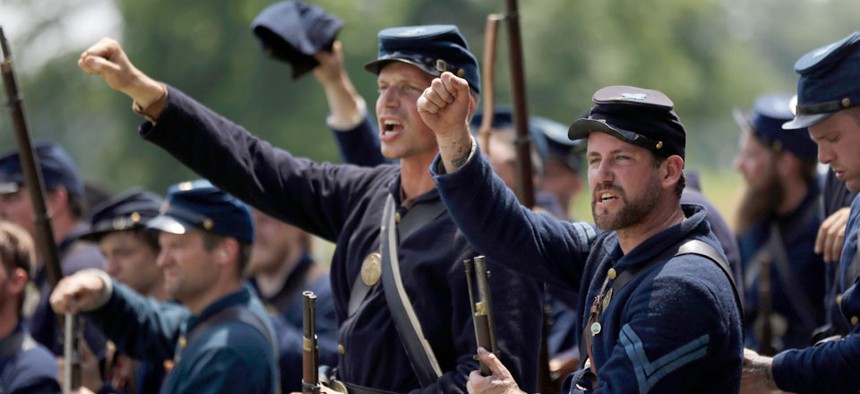Interactive Gettysburg: Using Modern Mapping Tools for a New Look at the Historical Battle

Re-enactors commemorate the 150th anniversary of the Battle of Gettysburg, Sunday, June 30, 2013. Matt Rourke/AP
Seeing how Gettysburg played out on a map can help us understand why, in the end, it turned out as it did.
When Robert E. Lee looked out over the land at Gettysburg, 150 years ago this week, what could he see?
Not much, says Middlebury professor of geography Anne Kelly Knowles. That is her conclusion based on a nearly decade-long project to visualize the Battle of Gettysburg using advanced digital mapping techniques, available for your exploration at Smithsonian.com.
"What our visual terrain analysis shows is that Lee, at no point in the battle, could see how many federal forces kept arriving at the field," she told me. "He really had no idea how big the force was that he was attacking on day two and day three."
The idea of using GIS to map the historical battle first came to Knowles one morning 12 years ago. "I was literally brushing my teeth one morning and I thought, gosh, what could Lee see at Gettysburg?" she said.
Because surveillance technology at the time of the Civil War lacked aerial capabilities, intelligence about troop movements was limited to what generals and their scouts could actually see. Based on that visual information, generals had to make quick decisions about whether to attack and where to deploy troops. "I knew that GIS could help a person answer that question, because you can use it to analyze terrain three dimensionally," she explained.


